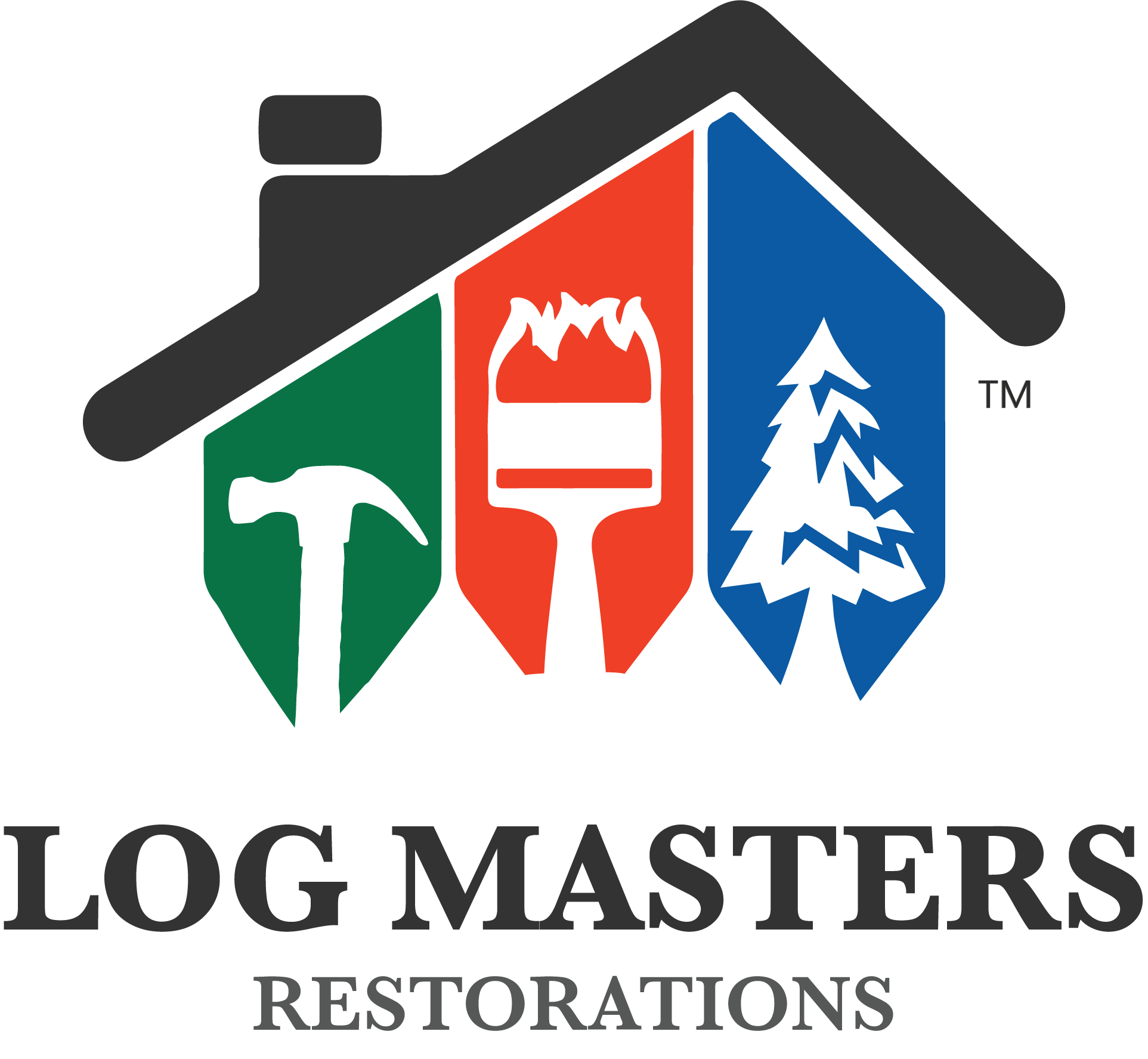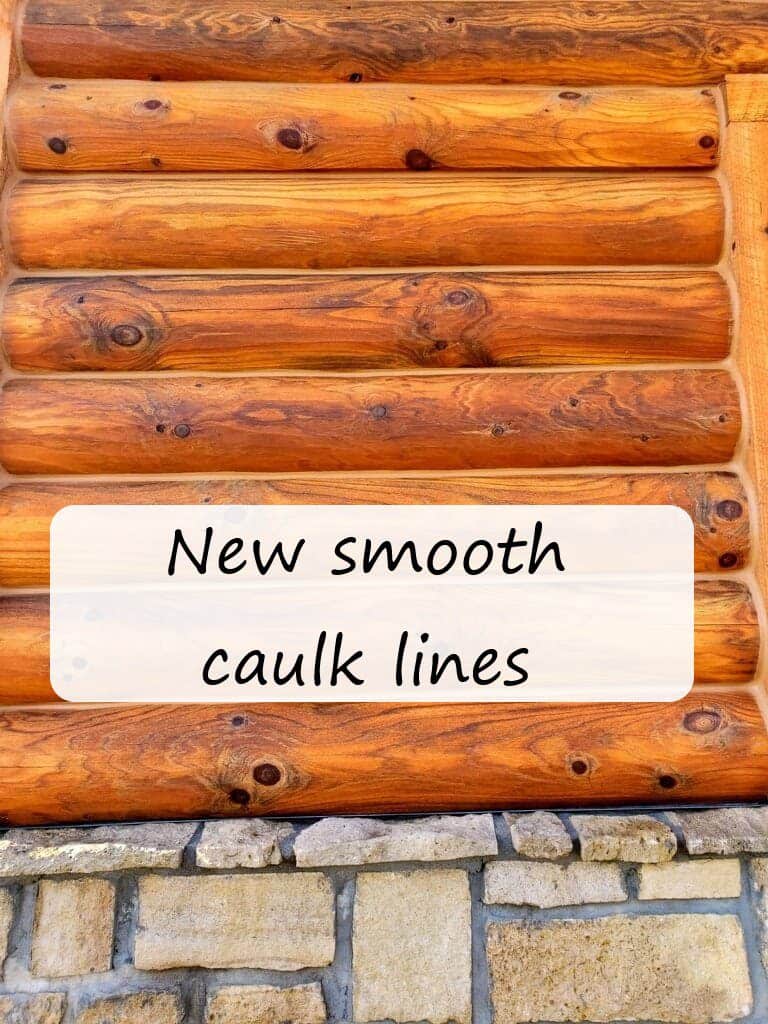Navigating log home maintenance can be daunting for newcomers. Chinking and caulking, crucial terms in this field, often confuse homeowners. Both sealants ensure your log cabin remains sturdy, weatherproof, and visually appealing. However, they serve different purposes in various contexts. We will discuss ”chinking” and ”caulking” to clarify their roles and benefits and assist you in choosing the best one for your home.
Looking to get services to chink or caulk your log home. Contact us today and get a free online estimate!
What is Chinking?
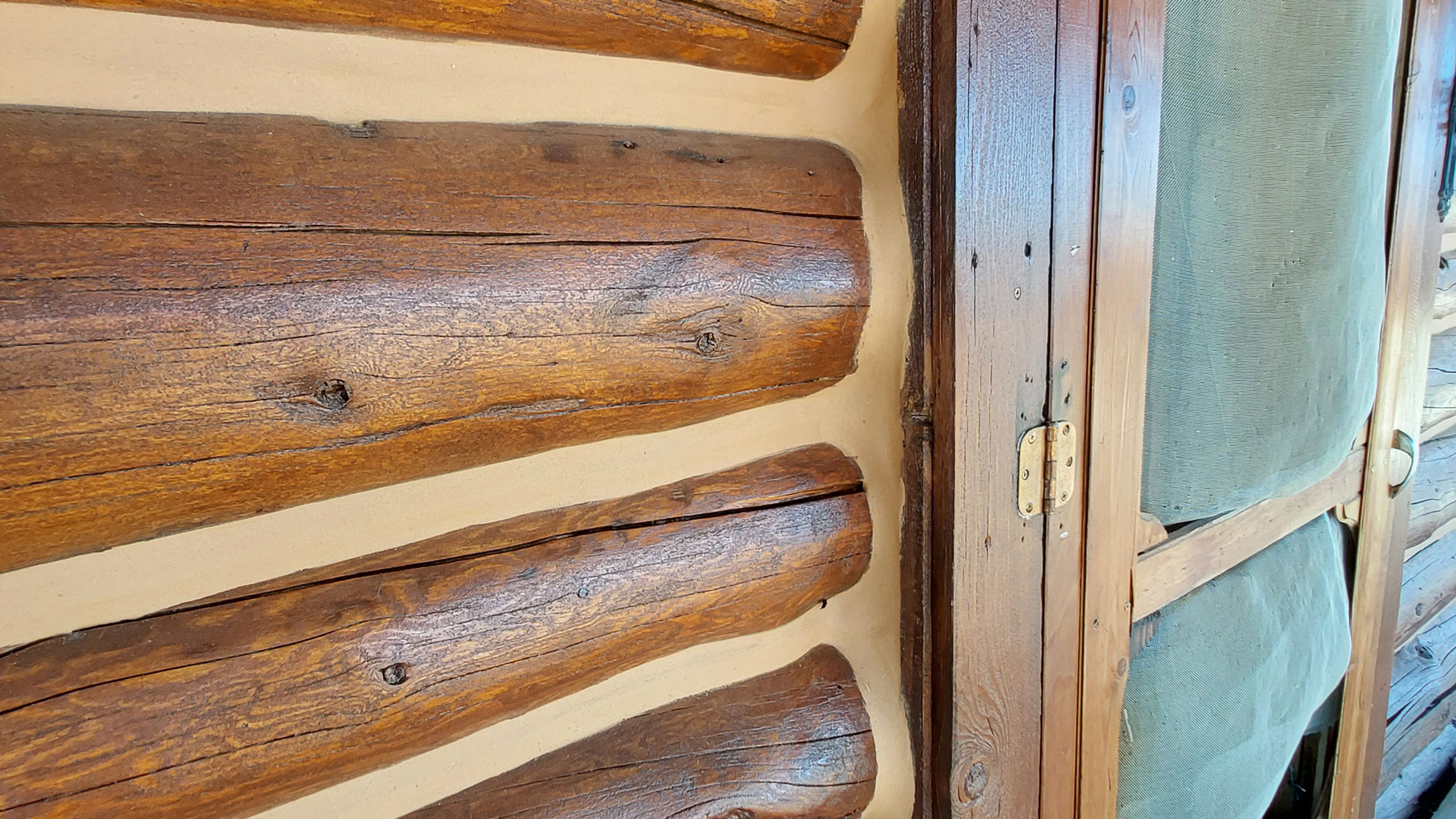
Tan Chink Lines
Chinking fills more significant gaps between logs, similar to mortar between bricks, preventing heat transfer and outside intrusion by insects or moisture. Chinking is traditionally used for applications over three-quarters of an inch and can span gaps of up to five inches. These lighter stripes between the logs come in various colors, from mortar white to dark brown.
Modern log home chinking, or synthetic chinking, remains flexible, adapting to weather changes without cracking. It tends to appear as broad, light stripes between logs. It is resilient, adding rustic charm while ensuring structural integrity. This dual function serves both aesthetic and practical purposes impeccably.
What is Caulking?
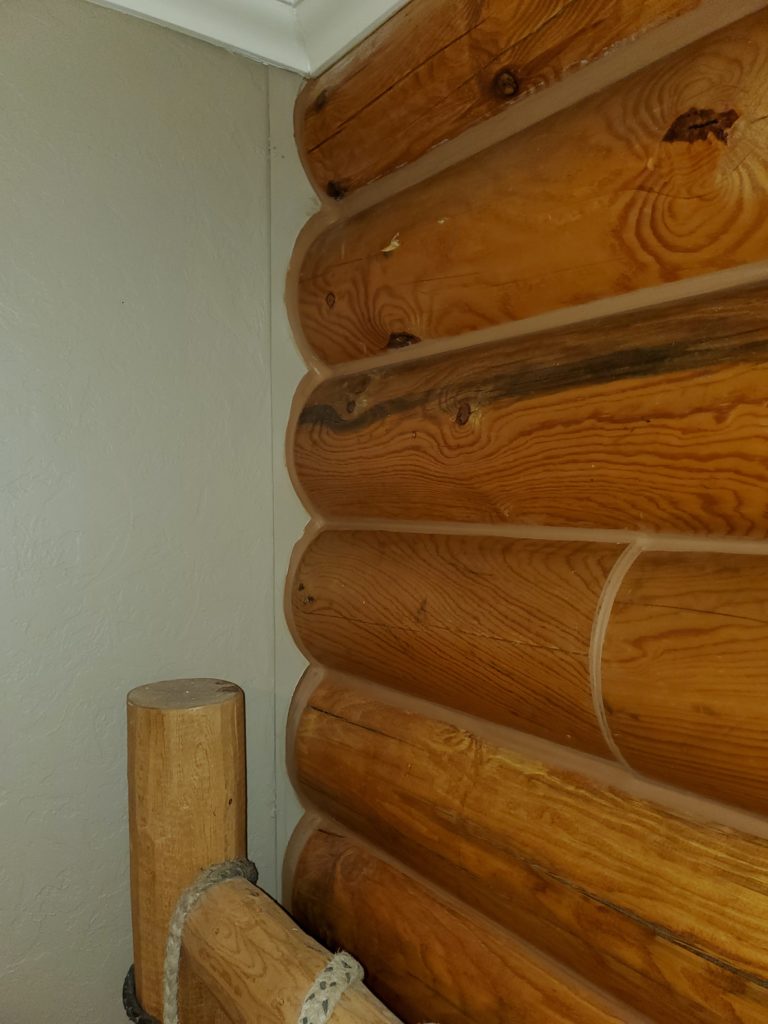
This caulking was done on a new interior wall after the entire log wall rotted and needed replacing.
Caulking is a sealant widely used in construction and home repair, including log cabin maintenance. Nearly every log home uses caulking, regardless of whether chinking is used or not. It acts as a waterproof filler and sealer, protecting log cabins from environmental factors.
Caulking seals joints and cracks between logs, blocking water, air, and dust. They also keep out insects, pollution, and noise. In log cabins, caulking provides robust protection and enhances aesthetics, ensuring the cabin remains weatherproof and energy-efficient.
Also, caulking comes in various colors and provides a smooth texture. This lets caulking blend in with the logs, creating a seamless, cohesive look and feel for your cabin.
Chinking vs. Caulking: Understanding the Differences
Navigating the world of sealants can be complex, especially when debating choices like chinking and caulking. Though they might seem similar at first glance, there are fundamental differences between them that affect their efficacy in various scenarios.
Composition and Flexibility
Whether synthetic or not, chinking features a textured appearance resembling old-world mortar. Its density surpasses typical house caulk, providing exceptional elasticity. This flexibility is vital for log homes that settle naturally over time, ensuring a durable seal against the elements.
In contrast, caulking consists of acrylic and silicone compounds. While less elastic than chinking, caulking excels in sealing smaller gaps (less than 1 inch wide). Its versatility lies in its strong adhesion to numerous surfaces, making it suitable for various applications in log cabin sealants.
Understanding these differences in composition and flexibility helps homeowners choose the suitable material for sealing gaps and ensuring the longevity of their log cabins. Are you opting for the old-world charm of chinking? Or are you opting for the seamless look of caulking? Each plays a critical role in preserving log homes’ structural integrity and aesthetic appeal.
Application Techniques
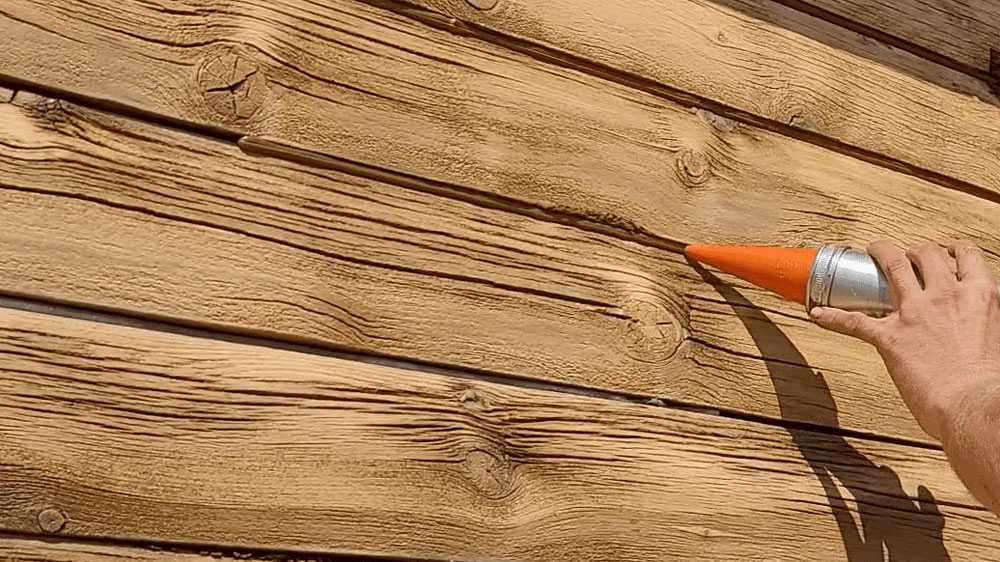 Chinking and caulking techniques differ significantly. Installing chinking involves thorough preparation, including backer rod placement, to achieve optimal depth. It’s
Chinking and caulking techniques differ significantly. Installing chinking involves thorough preparation, including backer rod placement, to achieve optimal depth. It’s
applied with a bulk-loading gun or chink machine and finished with commercial spatulas for aesthetics. On the other hand, the caulking application appears straightforward. The gaps are filled with the material using a bulk loader or caulking gun, ensuring an even distribution for aesthetic appeal and effective sealing.
Longevity and Maintenance
Considerations of longevity and maintenance are crucial for homeowners’ peace of mind. Chinking can last several decades when installed on a well-prepared surface and monitored periodically. Its robust nature and durability make it a long-term solution for maintaining log cabin integrity.
Caulking can endure up to two decades with proper maintenance. Regular inspections and immediate repairs upon detecting damage are essential for maximizing their lifespan. Monitoring and addressing cracks or gaps helps extend its lifespan and ensures ongoing protection against the elements.
Aesthetic Differences
Chinking, with its thick texture resembling old-fashioned mortar, enhances a rustic, traditional look. It is ideal for log homes and adds nostalgia to the architecture. Some prefer a modern look with flat chink lines, while others prefer a more rustic look that resembles a textured chinking appearance.
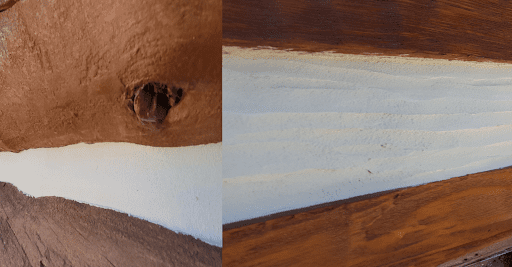
Modern or Rustic Chinking Styles
In contrast, caulking applies smoothly and thinly and is available in diverse colors to match your home’s stain for seamless integration with surroundings. It appeals to those who prefer subtlety without adding visual bulk.
Understanding these aesthetic differences helps homeowners choose between chinking and caulking based on their desired visual impact and architectural style.
When to Use Chinking

A grip strip is used before applying chinking for log gaps that exceed the typical size of the backer rod.
As a log home owner, you must understand the right situations to use chinking. This unique material’s primary function is sealing the significant gaps in your log cabin—think large spaces that typical caulking cannot handle.
Ideal Situations for Chinking
Here are details about where and when this sealing technique typically shines:
Log Cabins with Large Gaps
Over time, your beloved cabin may experience natural settling or shrinkage, causing larger-than-usual gaps between logs. Chinking secures these extensive cavities against external elements.
Rustic Aesthetics
Log homes with chinking have an undeniable rustic charm. They resemble age-old construction methods, lending a touch of authenticity that very few can resist. If you want a rustic aesthetic, chinking may be right for you.
Tips for Applying Chinking
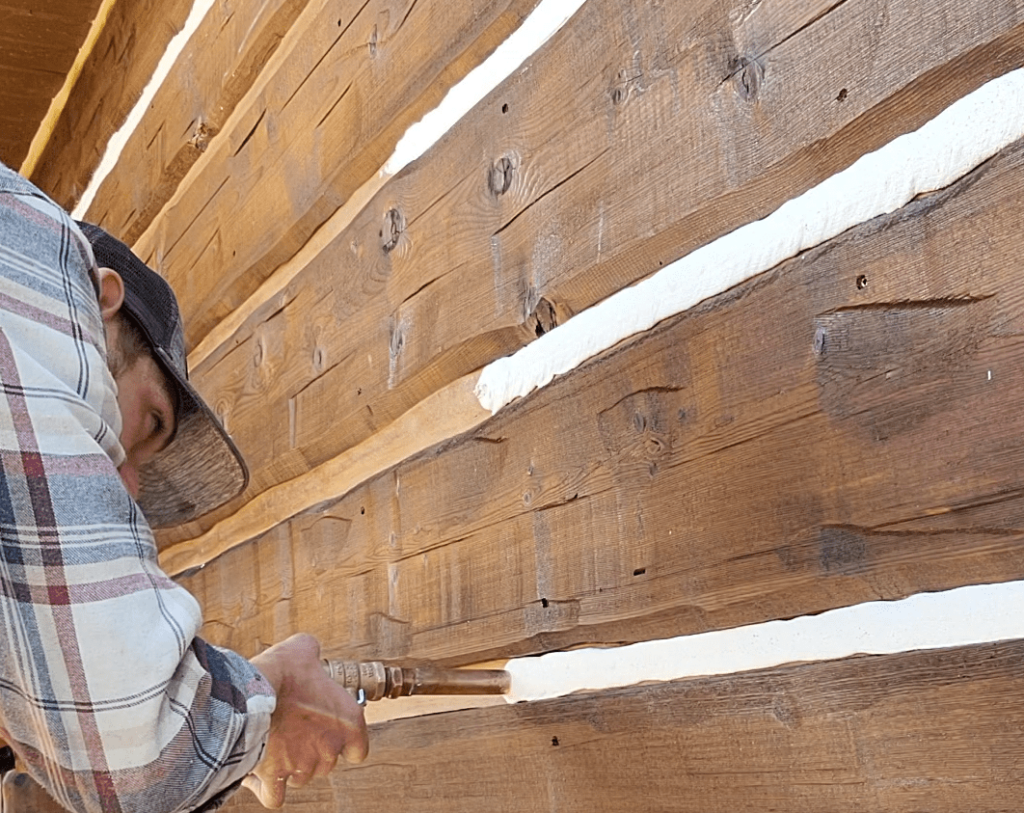
In this image, a Log Master is using a chinking machine to apply a layer of chinking on a log home.
Applying chink may seem daunting at first glance but armed with proper knowledge, and anyone can tackle it confidently! To start:
Preparation Matters: Before diving into the task headfirst, ensure your logs are clean of dirt and thoroughly dry from dew or rain.
Optimal Weather Conditions: Aim for a day without impending heavy rainfall and mild, medium temperatures.
Proper Tools: Invest in high-quality application guns, spray bottles, and foam brushes. These tools are crucial to achieving a neat finish and reducing unnecessary waste.
Use Backer Rods: Backer rods provide added depth control, preventing chinking from falling deep into log gaps while providing uniformity.
Seek Professional Help if Confused: At Log Masters Restorations, we’re genuinely passionate about protecting your log homes. We specialize in high-quality sealing solutions, including all-important chink application services.
Relish in the task at hand and remember patience is a virtue. Apply your chink gradually but evenly for the best results.
When to Use Caulking
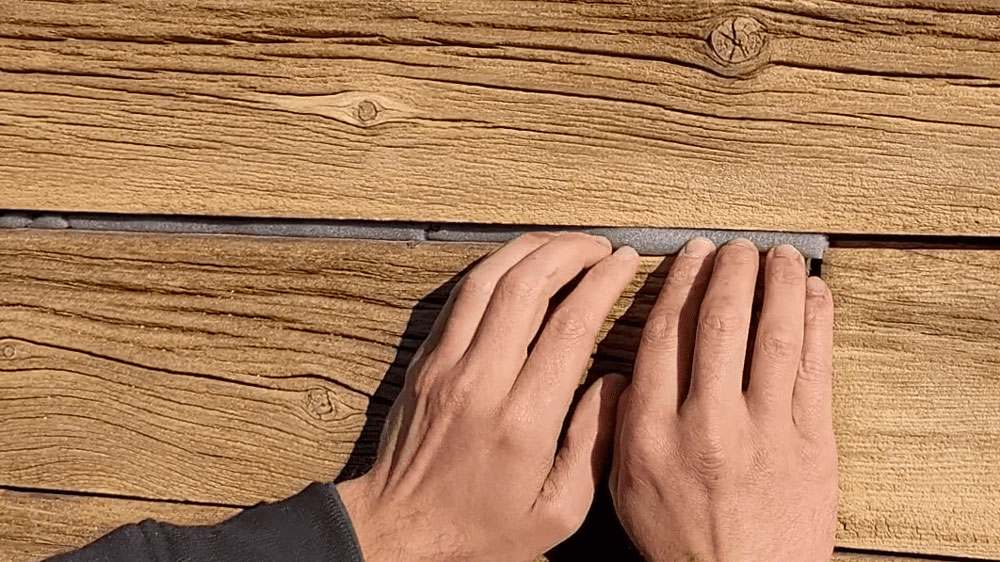
In this image, a Log Master inserts a small strip of backer rod between the log joints on this log cabin before applying caulking and staining after media blasting.
People use caulking to form a flexible and waterproof seal, filling gaps and seams within a structure. But when exactly should we employ caulking?
Appropriate Scenarios for Caulking
Caulking is a versatile solution for log homes that can be used in several specific scenarios. It is typically applied when gaps between logs are smaller, generally less than ¼ inch. These narrower gaps are common in well-constructed, tightly fitted log homes where the logs have minimal settling or shrinkage.
Tips for Applying Caulking
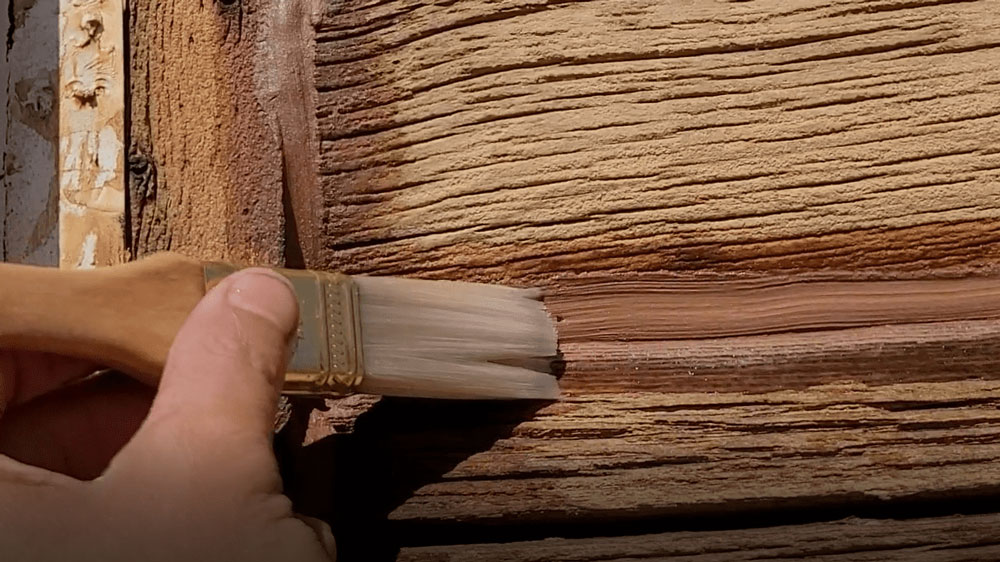
In this image, a Log Master is using a damp brush to smooth out the caulking after applying it so it blends in seamlessly with the cabin logs.
Now that we’ve clarified why caulking might be necessary in our log homes, let’s examine some tips for applying this material.
First, the surface needs to be clean. Make sure no dust or dirt remains before you apply the caulk.
Remember, sealants require dry conditions, so try not to apply them under wet circumstances.
You might need different types of caulk for different purposes: read the manufacturer’s manual instructions carefully.
Always smooth out your caulk line: You can achieve this with a simple paint brush or foam brush.
Protect Your Log Home with Our Expert Sealing Services
If you’re unsure about choosing between chinking and caulking for your log home, trust Log Masters Restorations. We pride ourselves on offering numerous services tailored to your log home’s needs. We handle log cabin chinking, filling, and sealing gaps between logs with flexible synthetic chinking. We also handle log home caulking, which provides a seamless look.
Our commitment extends beyond sealing services. We offer a range of treatments, including media blasting, chemical stripping, staining, pressure washing, and log repair. We execute each service with superior materials and proven techniques, leveraging our 20 years of experience across the Midwest.
Ensure your log home stands solid and beautiful for generations. Contact Log Masters Restorations today for a free estimate!
